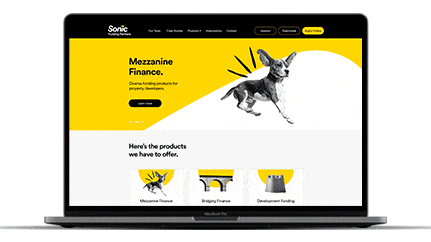Mobile-Friendly Website Design for Seamless Viewing on Any Device
Mobile-Friendly Website Design for Seamless Viewing on Any Device
Blog Article
Raise Your Brand With Stunning and User-Friendly Internet Site Style
In today's electronic landscape, a well-crafted site offers as the foundation of a successful brand name method. By integrating aesthetic allure with instinctive navigating, businesses can boost user experience and foster lasting connections. As we discover the essential elements of effective site layout, it becomes clear that the stakes are greater than ever before.
Relevance of Site Design
Internet site layout is essential in today's digital landscape, where roughly 75% of individuals evaluate a business's integrity based upon its site appearances. A well-designed website not just captures interest yet likewise cultivates trust fund and encourages customer engagement. In a period where online communications are paramount, companies can not pay for to neglect the effect of layout on customer assumption and actions.
Efficient site style works as the foundation for a brand's on-line existence, influencing user experience and retention prices. An aesthetically appealing and practical site can differentiate a brand name from its competitors, enhancing its market setting. A thoughtfully created web site can streamline navigating and improve the accessibility of info, which is essential for maintaining visitors and lowering bounce prices.
Moreover, the relevance of website style prolongs beyond aesthetic appeals; it encompasses the assimilation of responsive design concepts that satisfy different tools. As mobile use continues to climb, making sure that a web site operates perfectly throughout all systems is essential for getting to a wider target market. Finally, focusing on internet site design is not simply a matter of visual charm; it is a tactical imperative that directly influences a service's success in the electronic globe.
Secret Aspects of User-Friendly Style

Receptive formats make certain that the website functions flawlessly throughout various devices, from desktops to smartphones. This flexibility is crucial in today's digital landscape, where individuals access internet sites through numerous platforms.
Furthermore, clear calls to activity guide users toward preferred end results, whether that be buying, authorizing up for an e-newsletter, or speaking to business. These prompts must be prominently displayed and easily recognizable, utilizing contrasting colors and compelling language.
Moreover, accessibility functions, such as alt message for photos and keyboard navigating alternatives, are important in making the website functional for people with handicaps. By incorporating these crucial aspects, companies can develop an user-friendly site that not just enhances site visitor contentment but also motivates involvement and conversions.
Visual Appeal and Branding
Visual charm plays a critical duty in developing a brand name's identification and cultivating a connection with customers. A well-designed website shows the core values and personality of a brand name, creating an instant perception that can affect customer perception and engagement. Visual components such as color design, typography, and imagery interact to communicate the significance of a brand, making it memorable and identifiable.
Constant visual selections throughout all platforms enhance brand identity and contribute to a cohesive experience for users. A high-end brand might choose for a minimalist design with low-key shades go and sophisticated fonts, while a vibrant startup might welcome bold shades and lively graphics. These decisions not just communicate the brand name's message but likewise stimulate specific emotions and associations that resonate with target audiences.
In addition, visual allure can distinguish a brand in a saturated market. A visually striking web site can draw in attention and invite expedition, establishing a brand in addition to rivals. Eventually, the integration of visual appeal within site style is necessary navigate to this website for building brand loyalty and trust, as it functions as a structure for a solid, long lasting connection between the brand name and its audience.

Enhancing User Experience
A well-crafted design not just records focus yet also substantially improves customer experience, guaranteeing site visitors can navigate a website easily and contentment. Crucial element such as intuitive navigation, receptive designs, and clear telephone calls to activity are necessary in guiding users via the website seamlessly. When individuals can find info rapidly and easily, their total fulfillment increases, promoting a positive relationship with the brand.
In addition, integrating visual power structure helps to guide individuals' emphasis to one of the most vital web content, making it easier for them to recognize the site's offerings. Consistent usage of colors, font styles, and images reinforces brand identification while developing a cohesive experience that resonates with visitors.
Furthermore, optimizing lots times is essential; slow-moving sites can cause stress and greater bounce rates. Focusing on mobile-friendliness guarantees that individuals accessing the website from numerous tools have a consistent experience, additionally boosting usability.
Measuring Success and Influence
Success in site style can frequently be determined with numerous metrics that expose the influence of individual experience on site visitor habits. Key efficiency indicators (KPIs) such as bounce price, typical session period, and conversion rate provide beneficial insights right into how efficiently a site involves its customers. Website Design. A high bounce rate may suggest that visitors are not locating what Visit Your URL they expect, indicating the requirement for layout enhancements or material improvement
Furthermore, tracking user interactions with tools like heatmaps and session recordings can illustrate exactly how site visitors browse the site, highlighting locations that require optimization. If individuals regularly neglect a call-to-action switch, it might require rearranging or revamping for better exposure.
Moreover, gathering customer responses with studies or functionality testing can help identify discomfort points in the user journey. This qualitative information complements quantitative metrics, providing an alternative sight of site efficiency.
Eventually, determining success and impact in site layout entails a combination of logical tools and customer understandings. By continually analyzing these metrics, organizations can make educated choices that enhance individual experience and foster brand loyalty.
Verdict
In conclusion, effective web site layout serves as a critical part for brand altitude in an affordable digital landscape. Inevitably, a well-executed internet site layout not just distinguishes a brand yet also considerably affects its on-line presence and success.
Report this page